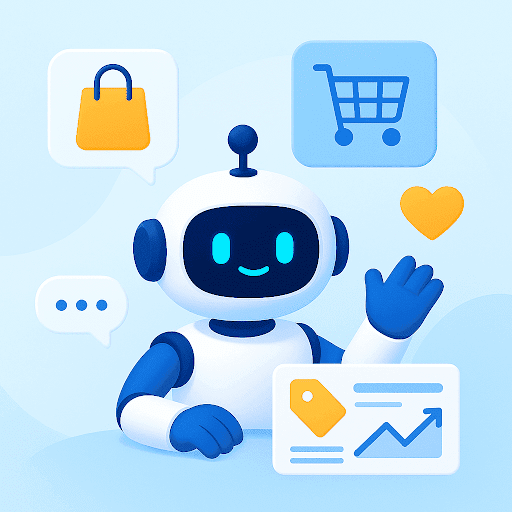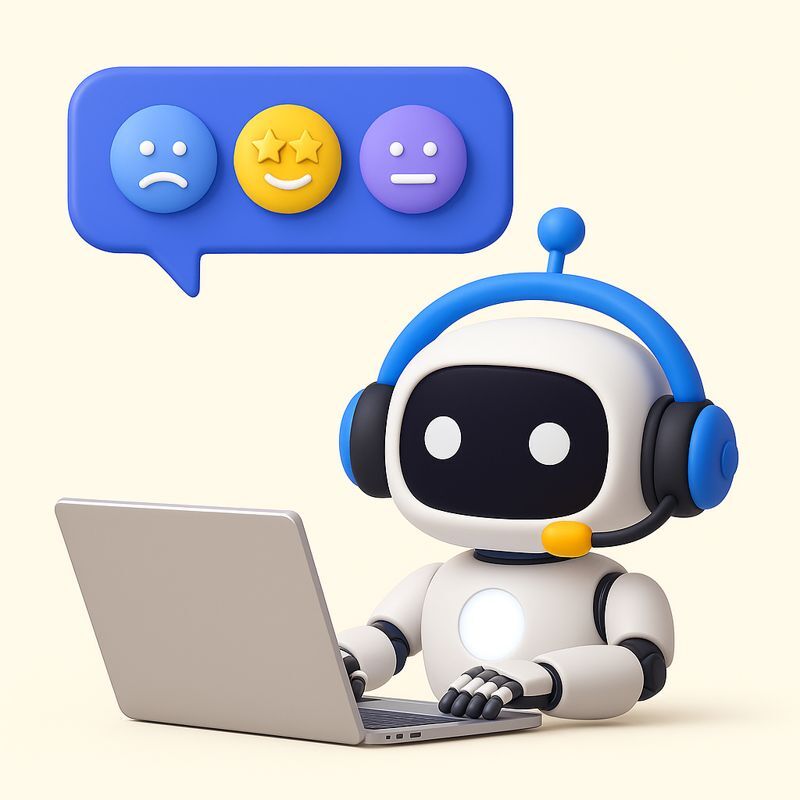Amit Ray, an Artificial Intelligence developer once said, “As more and more artificial intelligence is entering into the world, more and more emotional intelligence must enter into leadership.”
That gives us some food for thought.
In 2021, Artificial Intelligence has taken permanent residence in the business world. Here are some interesting AI statistics:
- 54% of executives say that implementing AI in their workplace has increased productivity.
- 79% of executives think AI will simplify their job and make it more efficient.
- 40% of businesses say that customer experience is their top motivator for using artificial intelligence.
Artificial Intelligence is here to stay. And as the last statistic suggests, improving customer experience is a strong motivator for many businesses when it comes to AI implementation. However, as with anything new and upcoming, implementing AI presents its own set of challenges. According to SEMrush, the top three most significant challenges companies face when considering the implementation of AI are staff skills (56%), the fear of the unknown (42%), and finding a starting point (26%).
That “fear of the unknown” includes the worry of taking jobs away from humans and dehumanizing customer experience. To be fair, those fears are not only valid, they are as old as computer technology itself. (The film “Terminator” that portrays this topic well came out in 1984, way before Siri could give us voice directions and Netflix suggested what to watch next.)
Humans cannot stop the further progression of technology, and nor should they want to. Instead, it’s important to focus on this part of digital transformation from a perspective that both recognize the benefits of AI and addresses its limitations.
Referencing the above quote, it’s important to develop the emotional intelligence needed to lead the business world that contains both human and AI elements. With this outlook, it is easier to see that when implemented and used in the right way, AI can add more humanity to customer experience.
Here are some things to consider.
Table of Contents
- 1. Division of labor sparks creativity
- 2. AI – A Customer’s best friend
- 3. Always being available for the customer
- 4. Being human
- 5. Create jobs, not destroy
- 6. Provide efficient support
- AI is here to add humanity to customer experience, not replace it
1. Division of labor sparks creativity
Right off the bat, it’s only natural to address the question that has been around since the beginning of the Industrial Revolution: “Will the machines take away our jobs?”
No reason to lie here. The short answer is “maybe.” The long answer is also “Maybe,” but followed by “It will not take away your livelihood. Instead, be prepared to adapt and take up new opportunities.”
Before panicking, hear this out. Usually, customer service agents can only provide service to one customer at a time. In contrast, Artificial Intelligence, such as chatbots, can participate in multiple conversations at the same time.
Chatbots, on websites or on mobile apps, can answer simple questions and solve basic customer inquiries. For example, resetting a password, routing calls, helping a customer login, offering guidance on how to use certain digital products and services, providing automated responses to social media messages, or finding specific information. They can also direct a more complex customer inquiry to the right department within an agency. This ensures that a customer in need of accounting help will not end up with a general support agent with no expertise in accounting.
In taking on these tasks, chatbots make the customer experience more efficient and free up human resources to deal with more complex customer queries.
Human agents who are not overwhelmed by a large number of simple inquiries are less prone to burnout. This facilitates better engagement of the workforce, increased motivation, and room to deliver helpful, positive customer service. It also opens up time and resources for humans to come up with new ideas and focus on more creative tasks.
Evisort, an AI-supported legal contract management company, is a great example here. The AI-based platform helps companies reduce the time needed to review hundreds of pages of legal documents, minimize risks of non-compliance, reduce overall costs, and uncover errors the naked eye may glance over. They leverage AI to handle all the small and tedious tasks, leaving humans free to focus on the big picture and come up with creative ideas to improve the product. This balance reflects the broader role of artificial intelligence and machine learning development, where advanced systems are designed to complement rather than replace human ingenuity. After all, nothing beats human creativity.

2. AI – A Customer’s best friend
There is one thing that makes humans very happy. That is to be known. When people feel that someone understands them, knows their desires, and is there to truly support them, they open up and build meaningful relationships.
With that in mind, let’s remember that AI can help personalize customer experience and meet the customer’s needs. Amazon’s product suggestions or preprogrammed preferences in smart devices are good examples of beneficial personalization. This is just one instance of AI in software, where advanced analytical mechanisms enable AI app developers to create mobile applications with accurate forecasting capabilities
Chatbot triggers are another example. They can offer a website visitor a discount code or guide them to sign up. They can direct customers to specific pages that can make their overall customer experience better. By helping humans feel more connected to the brand through personalization, AI brings humanity into the customer experience.
Alongside AI-driven solutions, businesses often seek to hire iOS developers to create mobile applications that can further enhance customer engagement and accessibility.

3. Always being available for the customer
If customer support agents were there to tend to your needs around the clock, you’d probably think that was a wonderful display of hands-on customer experience. But, not all companies can offer 24×7 support, owing to a lack of resources.
Here’s where Artificial Intelligence comes in. When your support staff is not at work, AI chatbots and AI-powered virtual assistants can guide customers to the right solution. This kind of treatment shows customers that they matter.
Integrating Artificial Intelligence with CRM systems can automate tasks seamlessly, and improve response times during customer support interactions.
“AI-enabled chatbots can add more humanity to customer service simply by always being available, 24×7, with no wait time for the customer, and providing nearly instant responses,” says Beerud Sheth, CEO of Gupshup. “The net result is essentially a personal concierge, who never sleeps, responds instantly, knows you well, has great EQ, and is very efficient at getting things done – what can be more human than that?”
4. Being human
One major concern about AI implementation is that AI will make customer experience more robotic and less empathetic and human. To remedy this, programming AI in ways that add a unique human touch can help create more relatable experiences.
Michael Brown, Director of Fresh Results Institute, suggests the idea of implementation of human “emotional juice” into AI-powered customer interactions.
“The idea of having emotionally blunt and lifeless machines to sell to them still scares many, but customer interaction with AI doesn’t have to be that sentimentally dry.” he says, “AI can even make customer interaction more stimulating for the customer by being trained in humor. Believe me, humor is one of the most effective ways to garnish AI with humanity when interacting with buyers. The work is in holistically training the AI to autonomously generate jokes that are yet sensitive to cultural diversity and even the temperament of the customer.
Such ambitious capacity requires loads of data to train the AI – but it is all still possible due to data labeling and AI model training.. Advancement in neural network technologies has exponentially amplified the natural language processing (NLP) capacity of AI technologies.”
The future is an empathetic, funny, human-like AI that knows us best and serves us well.
5. Create jobs, not destroy
For every door that closes, there is another one that opens. The Industrial Revolution threatened farming. The automobile literally put horse-and-buggy businesses out of the market. Steve Jobs introduced technology that eventually replaced dozens of other age-old tools people were using. Each time society worried about their jobs being taken away, more jobs were created in other ways.
In the current Digital Transformation age, things are not much different. Whatever jobs AI displaces, it has the potential to create more job opportunities.
A good example of this is Handwrytten, a company that provides handwritten notes for businesses. What a sweet, old-fashioned tradition! The catch is that the company uses robotic handwriting machines to create these notes. At the same time, the company employs people to handle functions like production and customer service and because of that, they’re able to create many job opportunities.

6. Provide efficient support
The sole purpose of AI since its creation is to make our lives easier.
For example, 2020 brought many challenges to the world. In the business world, in particular, that meant adjusting to new rules: managing internal and external communications remotely. Here’s where AI came to the rescue.
Businesses and governments impacted by COVID-19 used conversational AI to automate thousands of interactions, manage overburdened call centers, and reduce wait times.
“When COVID-19 started, we were deemed an essential service so we ensured our tech support desk was open and ready to assist every day during the pandemic,” says Joe Silverman, CEO of New York Computer Help. “Any time we had a staff member with cold-like symptoms, we had them stay home for precautions. In turn, if they were well enough to work, we would have them log in remotely at work and greet customers through their monitors. We have carried this concept over until today for staff members who want to work from home, travel, or just feel like hanging out as a remote person for the day.”
Similarly, during the pandemic, Tarrant County of Texas relied on live chat to support its residents when the physical offices were closed or worked at a limited capacity. More than 50 percent of the interactions were resolved on the first try with the help of a chatbot that provided information quickly and efficiently. Features such as real-time translation also came in handy. Built into the live chat system, it allowed clerks to communicate with customers in any language. Real-time translation broke language barriers, which became useful in Tarrant County because more than a fifth of the county’s population is Spanish speaking.
AI is here to add humanity to customer experience, not replace it
Necessity is the mother of invention. The Digital Age is here because of all the advancements we’ve made so far. Using AI solutions to enhance customer service and customer engagement has never been easier. According to a study by Gartner, it is predicted that by 2022, 70% of customer interactions will involve emerging technologies such as machine learning (ML) applications, chatbots, and mobile messaging, up from 15% in 2018.
AI is one such advancement that is sure to catapult the way we do business to a whole new level. But, like with many other things, what matters is ‘how’ we leverage AI to engage and interact with customers.
 Skip to content
Skip to content











